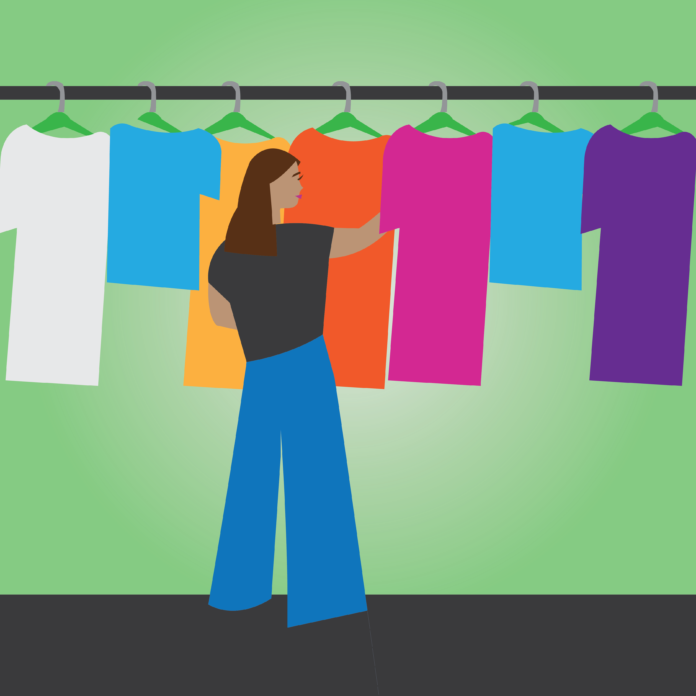The philosophy behind returning to what is already hanging in your closet before you go thrifting
By ADHITHI ANJALI — arts@theaggie.org
In the effort to create a more sustainable world, many people have made a definitive attempt to turn away from fast fashion as a means of achieving their stylistic aspirations. As the “#ThriftTok” tag on TikTok and its over two billion views convey, more and more people are seeing thrifting as a way to meet their needs and participate less in fast fashion consumerism.
But, exactly how is thrifting challenging a consumerist desire to acquire new clothing in order to keep up with increasingly rapid fashion cycles? According to a 2022 “Resale Report” conducted by ThreadUp, a popular and fast-growing resale site, the U.S. secondhand market is expected to reach $82 billion by 2026. This rapid expansion of the secondhand market shows that though thrifting may address the labor and environmental concerns of consumer culture, it will not solve the inherent problem of overconsumption.
Turning back to that old adage, “Reduce, Reuse, Recycle,” thrifting conquers the latter two, but the first might be better addressed by reforming your own habits. This is where the idea of “shopping your closet” might come in as a useful philosophy — fostering both environmental awareness and your own creative forces.
Essentially, the idea of “shopping your closet” is about putting the clothes already in your closet to new use. The main purpose is to reduce consumption and challenge the desire to purchase a new piece of clothing, whether it comes from Depop or a department store.
Instead, you may find outfits or a style that you want to explore and look to your closet to find pieces that can capture the essence of that inspiration. Shopping your closet is a mindset that encourages creativity not driven by the new, but instead by what you thought was old.
Sarah Pando, a fourth-year environmental policy analysis and planning major, works as the co-unit director at the Aggie Reuse Store. Pando reimagines one piece of clothing as a myriad of others, whether that means cutting it up, screen printing it, patching it or just wearing it in an unconventional way.
“When I see a piece of clothing, I don’t just see one way of wearing it, I see multiple,” Pando said. “This pushes me to repurpose the clothes that I’m not wearing. There are so many microtrends, what’s ‘in’ and ‘out’ changes so fast.”
By shopping your closet, you can create a personally timeless wardrobe that fits your needs, outside of the world of fashion cycles and microtrends. By pulling out those old clothes, you can remind yourself of previous versions of style and see how they can be incorporated into your own ever-evolving definition of yourself.
Beyond the creative aspect, it should be recognized that to shop and dress sustainably ultimately means reducing our consumption. Pando explained that “another issue is that people think thrifting is the solution, but we still have textile waste.”
Only 14.5% of clothes in the U.S. are recycled or reused, and the rest contribute to landfill waste or are exported to other countries. Even of clothing donated to thrift stores, upwards of 80% of donated clothing is left unsold according to Maxine Bédat, author of “Unraveled: The Life and Death of a Garment.”
Thrift stores are not an unproblematic dumping ground for fast fashion excess. While they serve an incredibly important purpose in extending the life of already-in-use garments, in order to target the issues posed by the fast fashion industry, one of our primary aims should be to reduce all consumption. This can have far-reaching effects, from limiting environmental pollution and textile waste to labor violations.
Though replacing a worn item or even treating yourself to something new is sometimes necessary, before you make a purchase, try to ask yourself if you can find a similar piece in your existing wardrobe. Ideally, shopping your closet will remind you of the clothes that you might have forgotten at the bottom of the pile and prompt you to experiment before you feel the need to buy.
Written by: Adhithi Anjali — arts@theaggie.org




